
Phi Cassiopeiae is a multiple star in the constellation Cassiopeia with a combined apparent magnitude of +4.95. The two brightest components are A and C, sometimes called φ1 and φ2 Cas. φ Cas A is an F0 bright supergiant of magnitude 4.95 and φ Cas C is a 7.08 magnitude B6 supergiant at 134".

NGC 3293 is an open cluster in the Carina constellation. It was discovered by Nicolas-Louis de Lacaille in 1751. It consists of more than 100 stars brighter than 14th magnitude in a 10 arc minute field, the brightest of which are blue supergiants of apparent magnitude 6.5 and 6.7. There is also a 7th magnitude pulsating red supergiant, V361 Carinae.

NGC 6281 is an open cluster of stars in the constellation Scorpius. It was not included in the Messier or Caldwell catalogues of nebulous objects, but it is the brightest such cluster in the constellation to be left out of both. It is readily observed with the naked eye; it is located about 2° to the east of Mu Scorpii. James Dunlop described the cluster as a "curiously curved line of pretty bright stars, with many stars mixt". John Herschel then described the cluster as both "pretty bright" and "pretty rich".
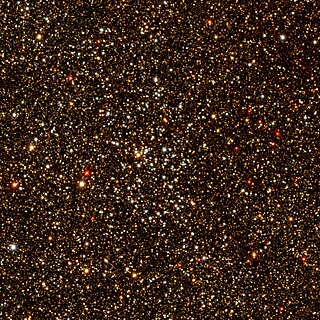
NGC 5999 is an open cluster in the constellation Norma. Its brightest star is HIP 78355. It is 5310 light-years distant and thought to be around 400 million years old.
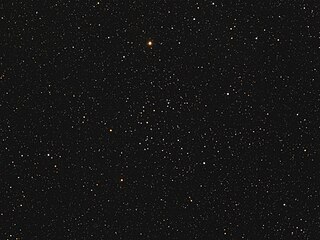
NGC 7209 is an open cluster in the constellation Lacerta. It was discovered by William Herschel on 19 October 1787. The cluster lies 3,810 light years away from Earth. It has been suggested that there is another cluster at a distance of 2,100 light years projected in front of a cluster lying at 3,800 light years away, based on the reddening of the cluster, however, further photometric studies of the cluster did not support that claim.

NGC 2539 is an open cluster in the constellation Puppis, located at the north edge of the constellation. It was discovered by William Herschel on January 31, 1785. It is a moderately rich cluster and with little central concentration, with Trumpler class II1m.
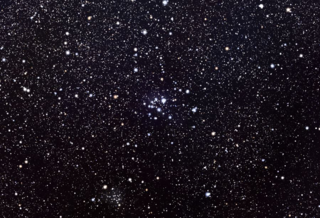
IC 2395 is an open cluster in the constellation Vela.
NGC 5662 is an open cluster in the constellation Centaurus. It was discovered by Nicolas Louis de Lacaille on May 17, 1752 from South Africa. James Dunlop observed it on July 10, 1826 from Parramatta, Australia and added it to his catalog as No. 342.
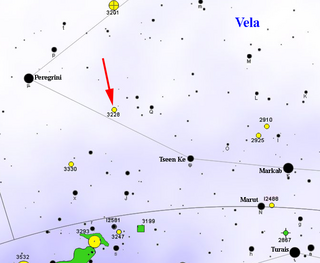
NGC 3228 is an open cluster in Vela. It was discovered by Nicolas Louis de Lacaille in 1751–1752, while he was in South Africa and catalogued it as Lac II.7. It is small but bright and can be observed easily with binoculars in sufficiently dark skies.

NGC 5281 is an open cluster in the constellation Centaurus. It was discovered by Nicolas Louis de Lacaille in 1751-1752 from South Africa, and catalogued it as Lacaille I.7. NGC 5281 is located three and a quarter degrees southwest of Beta Centauri. Under dark skies, it is bright enough to be spotted with naked eye, appearing as a 6th magnitude star.
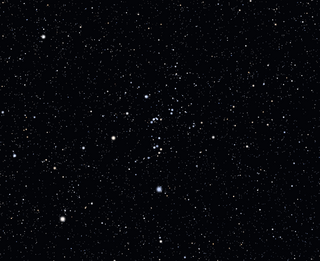
NGC 5460 is an open cluster in the constellation Centaurus. It is a bright but loose cluster of intermediate age located approximately 2,300 light years away from Earth. It is located nearly 2 degrees east-southeast of Zeta Centauri.
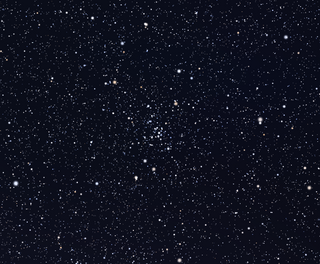
NGC 5617 is an open cluster in the constellation Centaurus. NGC 5617 forms a binary open cluster with Trumpler 22. It lies one degree west-northwest of Alpha Centauri.
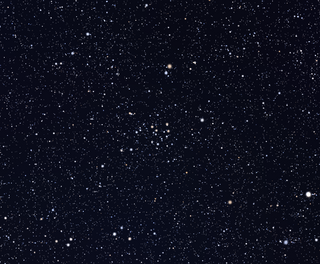
NGC 5316 is an open cluster in the constellation Centaurus. It was discovered by James Dunlop in 1826. Located approximately 4,000 light years away from Earth, it is located in the Carina-Sagittarius arm.

NGC 4349 is an open cluster in the constellation Crux. It was discovered by James Dunlop in 1826. It is located approximately 7,000 light years away from Earth.

NGC 4103 is an open cluster in the constellation Crux. It was discovered by James Dunlop in 1826. It is located approximately 5,000 light years away from Earth, in the Carina-Sagittarius arm.
IC 2714 is an open cluster in the constellation Carina. It was discovered by James Dunlop in 1826. It is located approximately 4,000 light years away from Earth, in the Carina–Sagittarius Arm.

NGC 4815 is an open cluster in the constellation Musca. It was discovered by John Herschel in 1834. It is located approximately 10,000 light years away from Earth.
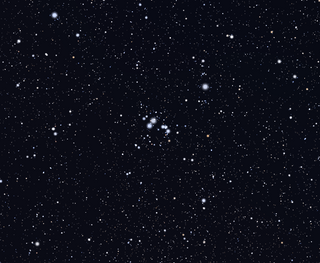
NGC 7160 is an open cluster in the constellation Cepheus. It was discovered by William Herschel on November 9, 1789. The cluster was also observed by John Herschel on October 7, 1829. It is a poor cluster and with little central concentration, with Trumpler class II3p. It is part of the stellar association Cepheus OB2, located one degree south-southwest of VV Cephei.
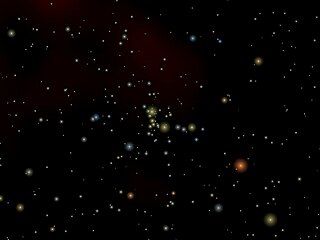
NGC 6910 is an open cluster in the constellation Cygnus. It was discovered by William Herschel on October 17, 1786. The cluster was also observed by John Herschel on September 18, 1828. It is a poor cluster with prominent central concentration and Trumpler class I2p. NGC 6910 is the core cluster of the stellar association Cygnus OB9.
Platais 8, also known as the a Carinae cluster or HIP 45080 Cluster is a small and faint open cluster located in the southern constellation Carina. It is estimated to be 440 light years distant based on parallax measurements.


















